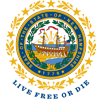In the News
Contact
Setting realistic expectations for school reopening
By Frank Edelblut
Following a challenging and unique spring, school officials across New Hampshire are working hard through the summer to prepare schools to reopen this fall. Last week, the School Transition, Reopening, and Redesign Taskforce (STRRT) submitted high-level recommendations to the Department of Education and the Governor.
STRRT was constituted in May to provide recommendations on reopening schools in September. It included nearly 60 work group members from a wide variety of backgrounds, ranging from parents, to pediatricians, to teachers and bus operators. STRRT also conducted a survey that generated 56,000 responses from parents, teachers, and administrators from across the state.
Using the large amount of data and the high-level recommendations as a framework, the Department is building out detailed information to assist districts as they plan for reopening. In collaboration with the Department of Health and Human Services, we expect to publish that information shortly.
Even as we prepare our schools for the fall, I want to stress the importance of setting realistic expectations for our return to school.
Schools, it seems obvious to say, are filled with children. And children sometimes act, well, childish. They are still growing and developing. We don’t expect them to do everything correctly. Mistakes are part of learning. We teach them to make good decisions, but know that they don’t always do so. That is not a flaw. It’s part of growing up.
Children will behave like children when they return to school. Members of STRRT and school officials across New Hampshire are going through an exhaustive process on how to reopen schools. We are considering various strategies and procedures to help ensure the safety of both our children and the staff that support them. Many of the ideas surfaced in this process rely on the actions of children, and we need to be prepared for the fact that children will not always follow these procedures.
That means that in spite of all of our planning and organizing, children may not always make good decisions. A quick survey of news headlines over the past couple of weeks helps illustrate that point. Consider,
“University of Alabama students recently partied around campus — despite knowing they were infected with the coronavirus, a local report said Tuesday.”[1]
“Three Florida roommates went out to party after reasoning their college town ‘barely has any’ COVID-19 cases — and all ended up infected, according to a report.”[2]
“At least 17 Ohio high school students tested positive for coronavirus after a recent trip to Myrtle Beach, when they returned to a county that had previously reduced infection rates to zero.”[3]
I could go on.
When we return to school, we will need to be realistic about our expectations for a couple of reasons. First, it is unlikely that children – even some of the older ones – will follow our well thought out plans exactly as imagined. They are children. That is not a flaw.
We also need to recognize the negative effect on those same children of an overly constrained environment. Children are designed to be curious learners and explorers. Stifling of that curiosity also has health consequences to our children, and I do not want us to lose sight of that.
The American Academy of Pediatrics recently published considerations for return to school that has some very good information for school leaders. They identify an important, though perhaps subtle, aspect of our return to school. “There is a conflict between optimal academic and social/emotional learning in schools and strict adherence to current physical distancing guidelines.” There is a balance that we are working to achieve between the tension of keeping staff and students safe and not causing undue harm.
As an example, AAP states that, “Although ideal, universal face covering use is not always possible in the school setting for many reasons. Some students, or staff, may be unable to safely wear a cloth face covering because of certain medical conditions (eg, developmental, respiratory, tactile aversion, or other conditions) or may be uncomfortable, making the consistent use of cloth face coverings throughout the day challenging… If not developmentally feasible, which may be the case for younger students, and cannot be done safely (eg, the face covering makes wearers touch their face more than they otherwise would), schools may choose to not require their use when physical distancing measures can be effectively implemented.”
STRRT and the thousands of people who contributed to its work have done their best to come up with ways to safely bring students back into our schools in September. In each community across New Hampshire, school leaders are working to come up with reopening plans that will work for those communities.
It is, however, a system that relies, in many cases and by necessity, on children. We know it won’t be perfect because none of us are perfect. That is not a flaw, but a fact of life. If we set realistic expectations, and continue to work with one another, I believe we can have a safe return to school.
Frank Edelblut is Commissioner of the New Hampshire Department of Education.
1 https://nypost.com/2020/06/30/alabama-students-partied-knowing-they-had-virus-official/?utm_campaign=iphone_nyp&utm_source=mail_app
2 https://nypost.com/2020/06/30/florida-woman-and-roommates-have-coronavirus-after-partying/?utm_campaign=iphone_nyp&utm_source=mail_app
3 https://www.cnn.com/2020/06/23/us/ohio-students-myrtle-beach-coronavirus-trnd/index.html




